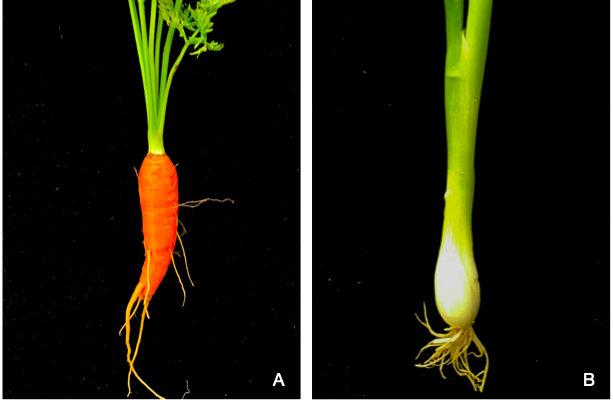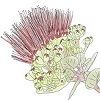2.1: Types of root systems
- Page ID
- 59218
Roots are the plant tissue that we see less often because they are usually found underground, making them the plant tissue that we know the least about (Figure \(\PageIndex{1}\)). Roots come in all sizes and lengths, being deeper for trees and more shallow for herbs. Some trees in arid places can grow very deep root systems in search of underground water. Kiawe (mesquite, Prosopis pallida), which is an introduced species in Hawai‘i, can grow a root system as deep as 55 meters (180 feet). In contrast, some plants like giant redwoods have a widespread but relatively shallow root system. The giant redwood tree (Sequoiadendron giganteum) can be as tall as 75 meters (245 feet) with roots reaching only 12 -14 meters (39 - 46 feet) into the ground, but extending for over 4,000 square meters (1 acre).
Roots have three main functions in plants. First, they anchor the plant to the soil, providing mechanical stability and support. Second, they absorb water and dissolved minerals from the soil and transport them upward to be used by the plant. Third, roots store the carbohydrates produced in photosynthesis. Besides these basic functions, roots also produce and export the plant hormones cytokinins and gibberellins, which are involved in promoting cell division and plant growth respectively. Finally, in addition to their basic functions, some roots also have specialized functions which we will discuss later in this chapter.
There are two types of root systems: taproots and fibrous roots (also known as adventitious roots; Figure \(\PageIndex{2}\)). Tap roots have a prominent primary root that develops when the seed germinates and the radicle emerges. From there, secondary or lateral roots grow. As the secondary roots grow they can also get thicker and develop further secondary roots, ending in a highly ramified root system. Taproots are characteristic of eudicots (Chapter 9), such as beans and carrots.
Fibrous roots, as the name suggests, look like fibers, with all the roots being of similar length and diameter. Fibrous roots usually form a dense superficial root system. Fibrous roots are also known as adventitious roots because the primary root that forms when a seedling germinates does not remain. Instead, roots grow out of the stem of the plant and are called adventitious. Fibrous roots are characteristic of monocots (Chapter 9), such as corn and grass (Figure \(\PageIndex{2}\)).



